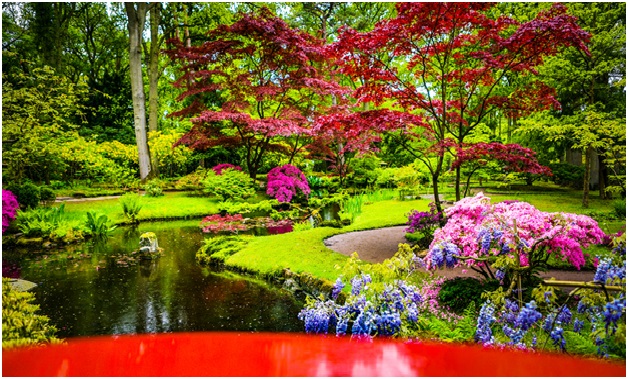Things to know to implement Traditional Japanese Garden
Traditional Japanese gardens are the beautiful gardens that are especially designed for the peaceful contemplation. Mostly these Japanese landscaping are implemented heavily on Taoist, Shinto and Buddhist philosophies to offer the spiritual divine type place for the visitors. The main motto of Japanese garden is to have peaceful nature. Generally, the Japanese garden elements symbolize or mimic the natural elements.

On the other garden, there are mainly four important elements that are utilized in the Japanese landscaping design that include ornaments, rocks, water and plants. While arranging and choosing those four elements in your landscaping, it is very vital to remember the primary design principles of a Japanese garden, that include symbolism, balance, borrowed scenery, enclosure and asymmetry. Following principles would work together to design the exact balance in your Japanese landscaping.
The following are the things you have to be aware of to have the best Japanese landscaping.
The best Japanese garden designs would emphasize the concepts of balance and asymmetry in the use of their essential elements. How to enclose the Japanese garden to design a tranquil environment for contemplation.
- Selecting furniture materials, pieces and styles that blend well in a Japanese garden
- Rock types that would work well with the Japanese garden and about how to find the exact affordable sources for the rocks in garden.
- Best plant choosing for a Japanese garden, highlighting the classic varieties in different sizes, shapes as well as textures.
- Picking trees for a Japanese garden that marks the endurance and strength.
- Ideas for paved patios edged softening and walkways by eliminating the lines that are straight, emphasizing organic shapes and free-form, using the ground covers for edges disguising.
- Picking out the natural and simplistic paving materials for a Japanese landscaping that includes natural stone as well as exposed-aggregate concrete and gravel.
- How to bring the art of Japanese cooking to your garden with a flat iron griddle or outdoor teppanyaki grill.
- Advices for choosing and keeping the rocks in a way in the Japanese garden to create the artistic focal points.
- Common bridge styles used in a Japanese garden, including flat zigzag bridges as well as a simple wooden arch bridge.
- Creating a welcoming entrance to a Japanese garden using potted bonsai trees, arbors and torii gates.
- Ideas for using premade bamboo fence panels or bamboo fencing to enclose your garden in traditional Japanese style.
- How to represent the water in a Japanese garden by using either sand racked or gravel in wave-like patterns.
- Ideas for Japanese-inspired water features that include elements such as koi ponds, waterfalls, stone basins and bamboo water spouts.
- How to include the rain chains and stone lanterns, along with other traditional Japanese garden decor into your landscaping.
- The overview of the main decorative ornaments without which a Japanese garden cannot be completed.
